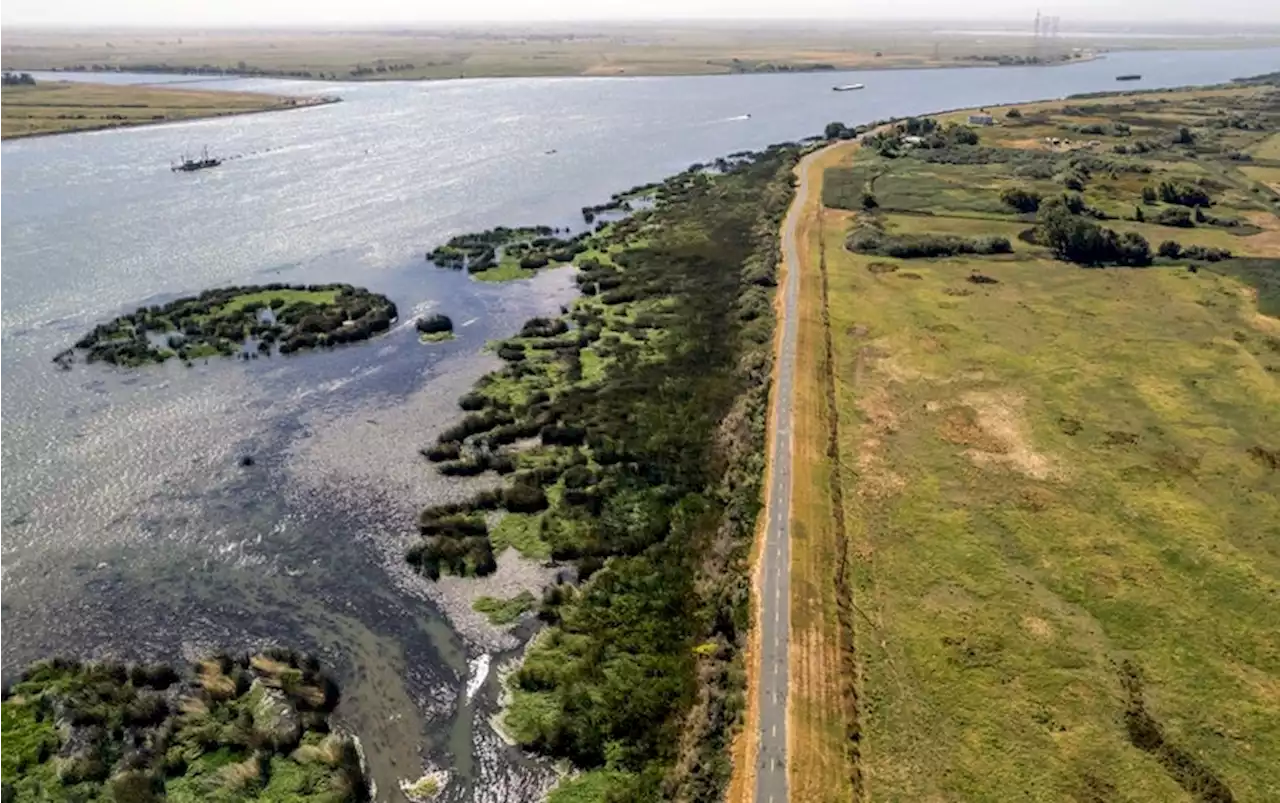Reviving peatlands in the San Joaquin River Delta could prevent levee failure and lock away carbon
Twitchell Island, Sacramento County, California — Steve Deverel gazes out over a levee on the San Joaquin River to a buoy where half a dozen sea lions are barking. It’s a loud reminder that even here, 50 miles inland, some of California’s most productive farmland lies perilously close to the Pacific Ocean.
The project passed its first important milestone on October 27, 2020, when the American Carbon Registry issued credits for 52,000 tons of CO₂ removed by the experiment, which is still in its very early stage. That makes this the first wetland project to generate verified carbon credits in the US, according to Steve Crooks, a Sausalito, California-based wetlands scientist and global expert in the field of “carbon-farming” from coastal wetlands.
The promise of peat A few thousand years after the end of the last Ice Age, the Delta was covered by a marshy, freshwater inland sea. Over millennia, layers of moss, mud, and vegetation accumulated to form peat. Under the right conditions, peatlands can store vast amounts of carbon. Marshes “sequester” or store CO₂ through photosynthesis as they grow, and the carbon stays trapped in the plants as they die and decompose underwater.
There’s also a broader threat. Soggy peatlands can be powerful carbon sinks. All that changes when the peat dries out. As peat oxidizes, it releases stored CO₂. In the Delta, this translates to an area of about 150,000 acres of soil turned into “this weird little chimney in the middle of the state that is just pumping out carbon dioxide,” says Campbell Ingram, executive director of the Delta Conservancy, a state agency that is collaborating with Deverel on the carbon-credits project.
To do so, however, the Delta’s defenders still need to overcome three daunting obstacles: the science, the expense, and the politics of wetlands conversion. Mack, who later consulted on the California Delta project, praised Deverel and colleagues for what she described as their pioneering work. “They showed it can be done,” she said, “and that is going to encourage other scientists to follow them.”
The clock is ticking. As peatlands increasingly dry out, those “weird little chimneys” are popping up all over the planet, potentially creating a dangerous feedback loop for climate change. That makes it all the more important that the Delta defenders find answers to the economic and political challenges of wetlands restoration.
United States Latest News, United States Headlines
Similar News:You can also read news stories similar to this one that we have collected from other news sources.
 Man Fatally Shot in Canal Neighborhood in San RafaelThe shooting was reported shortly before midnight by a caller who said that a man had collapsed near the intersection of Medway Road and Mill Street.
Man Fatally Shot in Canal Neighborhood in San RafaelThe shooting was reported shortly before midnight by a caller who said that a man had collapsed near the intersection of Medway Road and Mill Street.
Read more »
 San Antonio’s Rick Medina to fight another unbeaten at new arenaThe boxer will take on Raymond Ford in a battle of unbeaten featherweights at the new...
San Antonio’s Rick Medina to fight another unbeaten at new arenaThe boxer will take on Raymond Ford in a battle of unbeaten featherweights at the new...
Read more »
 Fun, free cheap: What to do in San Francisco this weekJerk chicken, grilled shrimp ‘po boys, bourbon caramel bread pudding. … Oh, we can almost smell it! Celebrate and support local Black-owned businesses at the return of this annual farmers market festival honoring Juneteenth.
Fun, free cheap: What to do in San Francisco this weekJerk chicken, grilled shrimp ‘po boys, bourbon caramel bread pudding. … Oh, we can almost smell it! Celebrate and support local Black-owned businesses at the return of this annual farmers market festival honoring Juneteenth.
Read more »
 San Rafael: Man fatally shot in Canal neighborhoodPolice in San Rafael are investigating after a man was fatally shot Saturday night in the city’s Canal neighborhood.
San Rafael: Man fatally shot in Canal neighborhoodPolice in San Rafael are investigating after a man was fatally shot Saturday night in the city’s Canal neighborhood.
Read more »
